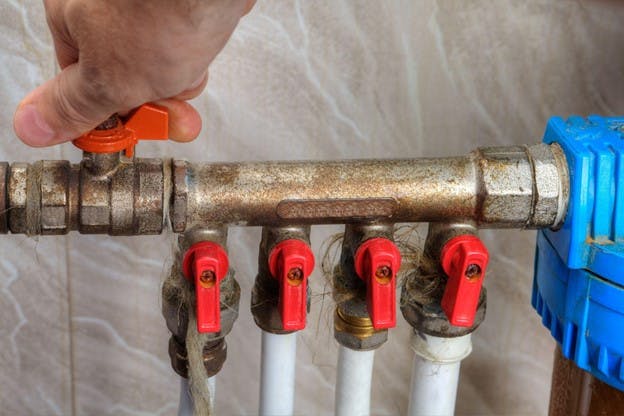Swift Remedies for Addressing Low Water Pressure in Your Home
Swift Remedies for Addressing Low Water Pressure in Your Home
Blog Article
What're your thoughts concerning 9 Reasons for Low Water Pressure in Your House?

Low water pressure in your house can be an irritating problem, impacting everything from bathing to cleaning recipes. If you're experiencing weak water flow, there are numerous possible causes and services to discover. In this guide, we'll discuss typical factors for low water pressure and sensible actions to resolve the problem effectively.
Intro to Low Water Stress
Low tide pressure happens when the flow of water from your faucets, showers, and various other fixtures is weak than common. This can make everyday jobs much more tough and much less efficient. Recognizing the sources of low tide pressure is essential to discovering the right remedy.
Usual Reasons For Low Water Pressure
Faulty Pressure Regulatory Authorities
Pressure regulatory authorities are in charge of keeping regular water stress in your house. If they malfunction, it can lead to low water stress or uneven circulation throughout your home.
Municipal Water Supply Issues
Often, the problem exists outside your home. Community water issues, such as main line leaks or upkeep job, can momentarily decrease water stress in your location.
Pipe Obstructions
In time, pipes can become obstructed with natural resource, sediment, or debris, restricting the flow of water. This is a typical problem in older homes with galvanized steel pipelines.
Rust
Rust within pipelines can bring about leakages and decreased water stress. Rust buildup can constrict water flow, particularly in maturing plumbing systems.
How to Identify Low Tide Pressure
Evaluating Pipelines
Inspect visible pipes for signs of leakages, deterioration, or clogs. Pay attention to any uncommon audios, such as knocking or rattling pipes, which could show concerns within the plumbing system.
Consulting with a Plumber
If you're not able to pinpoint the cause of low tide stress, think about hiring a specialist plumber to carry out a complete evaluation. They can identify underlying concerns and recommend proper options.
Examining Taps and Components
Begin by evaluating the water stress at various faucets and components throughout your home. If the problem is separated to certain areas, it might suggest localized problems.
Do It Yourself Solutions to Deal With Low Tide Pressure
Flushing Hot Water Heater
Debris accumulation in the hot water heater can limit flow and reduce effectiveness. Purging the storage tank occasionally aids remove sediment and preserve ideal efficiency.
Inspecting Stress Regulatory Authority
Make certain that the stress regulatory authority is working properly. Changing or replacing the regulator can aid recover appropriate water pressure throughout your home.
Cleaning Aerators and Showerheads
Mineral deposits can gather in aerators and showerheads, lowering water flow. Remove and cleanse these elements on a regular basis to enhance water pressure.
Cleaning Clogs in Pipeline
For small clogs, attempt utilizing a plumbing serpent or chemical drain cleaner to clear blockages in pipes. Be cautious when making use of chemicals and comply with safety and security guidelines.
When to Call an Expert Plumber
If do it yourself efforts stop working to resolve the concern or if you presume significant plumbing problems, it's finest to seek support from a licensed plumber. They have the competence and devices to deal with intricate issues safely and properly.
Preventive Measures to Maintain Water Stress
Mounting a Stress Booster
Take into consideration installing a pressure booster pump to boost water pressure in locations with consistently low circulation. This can be specifically useful for multi-story homes or buildings with high-demand components.
Monitoring Water Usage
Bear in mind water usage behaviors and stay clear of overtaxing the plumbing system. Straightforward modifications, such as astonishing showers and washing tons, can help keep appropriate water pressure.
Normal Maintenance
Arrange routine upkeep for your plumbing system to prevent problems such as deterioration, leaks, and obstructions. Attending to small issues early can assist prevent more significant fixings later on.
Final thought
Managing low water pressure can be discouraging, yet identifying the underlying causes and executing suitable remedies can recover optimal flow throughout your home. Whether it's cleaning up aerators, examining pipelines, or seeking advice from a plumber, taking proactive actions can make certain a stable supply of water for your everyday needs.
FOUR WAYS TO FIX LOW WATER PRESSURE NOW
Turning on a shower or faucet only to find the water comes out in a sad, slow drizzle is never a good feeling. How exactly are you supposed to wash a pan or take a quick shower when it takes 10 minutes just to rinse off a little soap? The good news is that when your water pressure is bad, there's always a cause: typically one that can be easily fixed. Here are some of the most common causes of low pressure and what you can do to fix the issue:
DEBRIS AND MINERAL DEPOSIT BUILDUPS
If you notice low water pressure from just one or two of the fixtures in your house, the problem likely has to do with debris buildup. Water is full of minerals and other debris, all of which can accumulate in your pipes and on your fixtures. This can cause a blockage that affects how much water flows through. To fix this, try filling a small plastic bag with white vinegar, and use a rubber band to hang it around your showerhead or faucet. Let the head of the fixture soak for a few hours, and the vinegar should loosen the deposits.
WATER LEAKS
Leaks are another common cause of low water pressure. If water is flowing out of your plumbing through a hole or crack before it can reach your fixture, the pressure coming out of the faucet or showerhead will be lower. A plumbing professional is your best bet for finding and repairing a leak in your water supply pipes.
Leaks are another common cause of low water pressure. If water is flowing out of your plumbing through a hole or crack before it can reach your fixture, the pressure coming out of the faucet or showerhead will be lower. A plumbing professional is your best bet for finding and repairing a leak in your water supply pipes.
A VALVE ISSUE
If you have low water pressure throughout your home, check your main shut-off valve to make sure it's completely open. You may also want to see if there's a pressure-reducing valve installed. If there is, have a plumber help you adjust the settings to get the pressure you're looking for.
OTHERS USING WATER
Believe it or not, your low water pressure could be caused by your neighbors. If you notice low pressure at certain times of day, it may be because you and the people living next to you have similar schedules - when everyone is showering at the same time, the pressure will be lower in every home. Low pressure throughout the neighborhood may also be caused by an issue with your municipal water supply. If that's the case, call the supplier to see if they're working on the issue.
https://www.rotorooter.com/blog/water-leaking/low-water-pressure-fixes/

I am just very interested by 10 Reasons for Low Water Pressure in Your House and I hope you enjoyed the article. Sharing is caring. Helping people is fun. Many thanks for your time. Come back soon.
This Resource Report this page